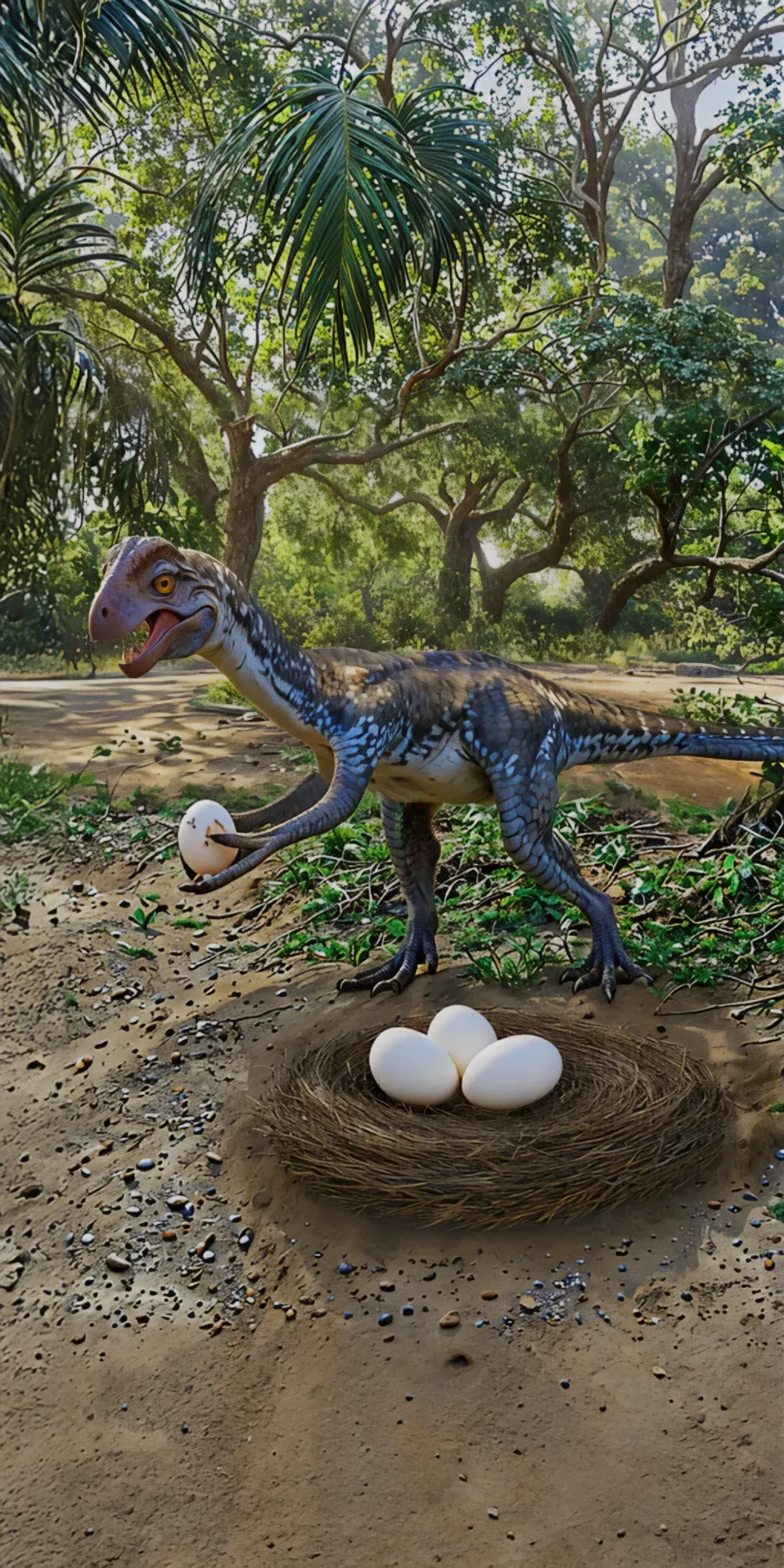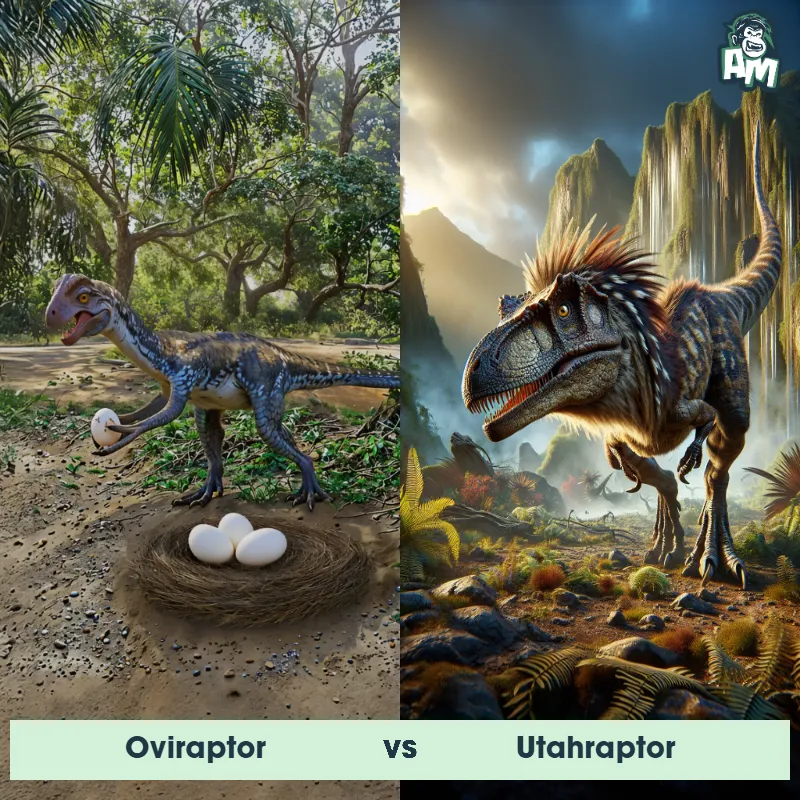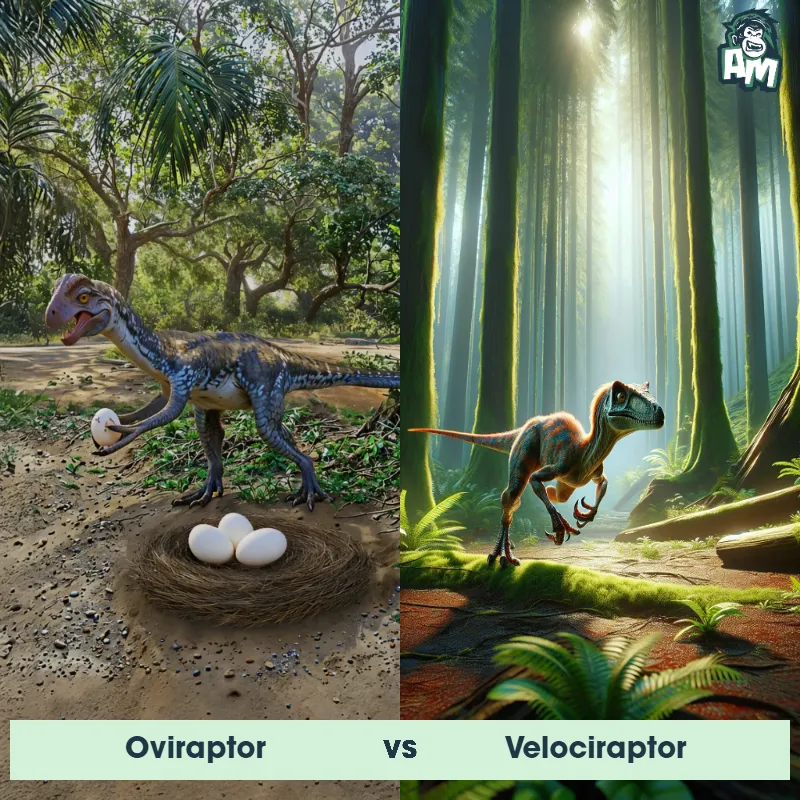The Oviraptor
The Oviraptor, a dinosaur that lived during the late Cretaceous period, was a small, bird-like creature with a toothless beak and a distinctive crest on its head. It measured about 6 feet in length and had a feathered body, making it one of the earliest known feathered dinosaurs. Despite its name, which means "egg thief," recent evidence suggests that Oviraptor may have actually been nurturing its own eggs rather than stealing them.

| Oviraptor | |
|---|---|
| Size | 6 feet (1.8 meters) |
| Weight | 75 pounds (34 kilograms) |
| Speed | 24mph (39km/h) |
| Key Strength | Speed and agility |
| Biggest Weakness | Lack of physical weaponry |
| Scientific Name | Oviraptor philoceratops |
| Family | Caenagnathidae |
| Habitat | Semi-arid environments |
| Geography | Asia |
| Diet | Omnivorous |
| Lifespan | 8 years - 10 years |

The Oviraptor
The Oviraptor, a dinosaur that lived during the late Cretaceous period, was a small, bird-like creature with a toothless beak and a distinctive crest on its head. It measured about 6 feet in length and had a feathered body, making it one of the earliest known feathered dinosaurs. Despite its name, which means "egg thief," recent evidence suggests that Oviraptor may have actually been nurturing its own eggs rather than stealing them.
Fun Fact: Oviraptor was originally named by paleontologists who believed it was caught in the act of stealing and eating eggs, but further research has shown that the eggs it was found with likely belonged to itself.
| Oviraptor | |
|---|---|
| Size | 6 feet (1.8 meters) |
| Weight | 75 pounds (34 kilograms) |
| Speed | 24mph (39km/h) |
| Key Strength | Speed and agility |
| Biggest Weakness | Lack of physical weaponry |
| Scientific Name | Oviraptor philoceratops |
| Family | Caenagnathidae |
| Habitat | Semi-arid environments |
| Geography | Asia |
| Diet | Omnivorous |
| Lifespan | 8 years - 10 years |
Oviraptor Matchups
We use AI to simulate matchups between the Oviraptor and other animals. Our simulation considers size, strength, and natural predatory behaviors to determine the most likely outcome.

Can't find the Matchup you want?
Create Your Own MatchupOviraptor: Diet, Predators, Aggression, and Defensive Behaviors
What did Oviraptors eat?
Oviraptors were omnivorous dinosaurs, meaning they ate both plants and meat. Their diet likely consisted of eggs, small animals, insects, and plants. Despite their name, which means "egg thief," recent research suggests that Oviraptors may have actually been caring parents that protected their own eggs rather than stealing them.
Did Oviraptors have any predators?
As adults, Oviraptors were relatively large and may not have had many natural predators. However, young Oviraptors would have been vulnerable to larger predators such as Tyrannosaurus rex or Velociraptors. These carnivorous dinosaurs would have seen young Oviraptors as easy prey.
Were Oviraptors aggressive?
Oviraptors are not believed to have been particularly aggressive dinosaurs. They were likely more focused on feeding themselves and caring for their young rather than actively seeking out conflict with other dinosaurs.
Did Oviraptors fight?
While Oviraptors may have engaged in some form of combat for resources or mates, they were not known for being particularly aggressive fighters. Their main priority was likely to avoid conflict and protect their eggs.
How did Oviraptors defend themselves?
Oviraptors likely had a few strategies for defending themselves against predators. Their sharp claws and strong beaks could have been used for self-defense, and they may have also relied on their speed and agility to escape from dangerous situations. Additionally, as mentioned earlier, Oviraptors may have protected their eggs by using their bodies as a shield.
What was Oviraptors' biggest weakness in a fight?
One potential weakness of Oviraptors in a fight would have been their relatively small size compared to some of the larger carnivorous dinosaurs of the time. While they had sharp claws and a beak, they may have struggled to defend themselves against larger predators like Tyrannosaurus rex. Additionally, their instinct to protect their eggs could make them vulnerable in a conflict if they were distracted or outnumbered.
Fun Fact: Oviraptor's distinctive crest was once thought to be used for aggression or display, but it is now believed to have been used for vocalizations, much like a modern bird's crest.
Fun Fact: Oviraptor was first discovered in the Gobi Desert by a team of American Museum of Natural History expeditions led by Roy Chapman Andrews.












